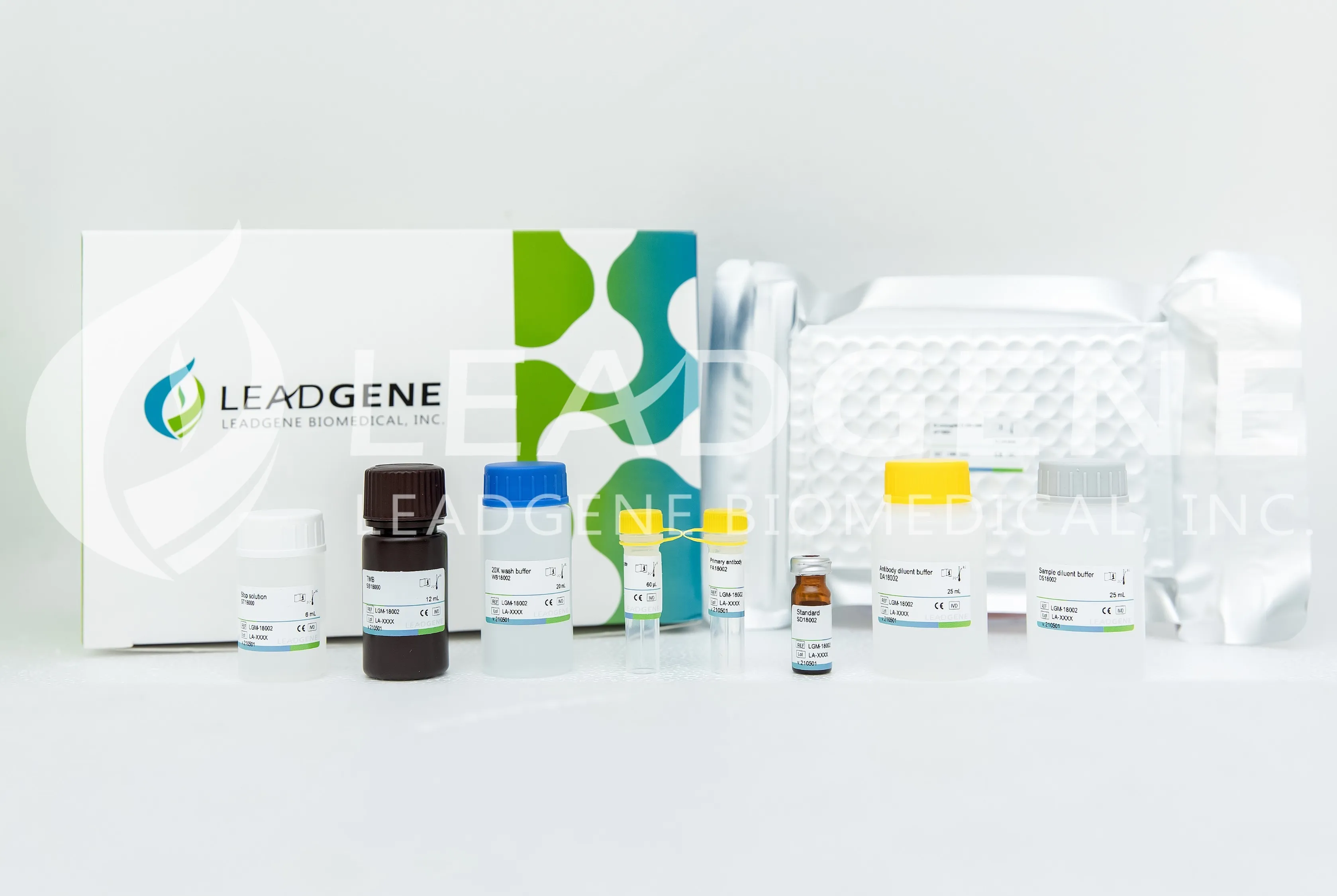
Chronic kidney disease (CKD) is a long-term condition in which the kidneys are damaged and unable to function properly. There are many different causes of CKD, including diabetes, high blood pressure, inflammation of the kidneys, and inherited conditions, among others. It is important to note that CKD can be caused by a combination of these factors.
Indoxyl sulfate (IS) is a breakdown product of dietary tryptophan. It acts as a protein-bound uremic toxin and is excreted through the kidneys. In CKD patients, the kidneys are not able to effectively filter and remove IS from the body, leading to its accumulation in the bloodstream (Figure 1). Clinical studies showed that high serum IS levels were associated with an increased risk of kidney damage and cardiovascular disease in CKD patients (1). Further studies demonstrated that IS stimulated reactive oxygen species production in CKD, causing inflammation and worsening complications (2).
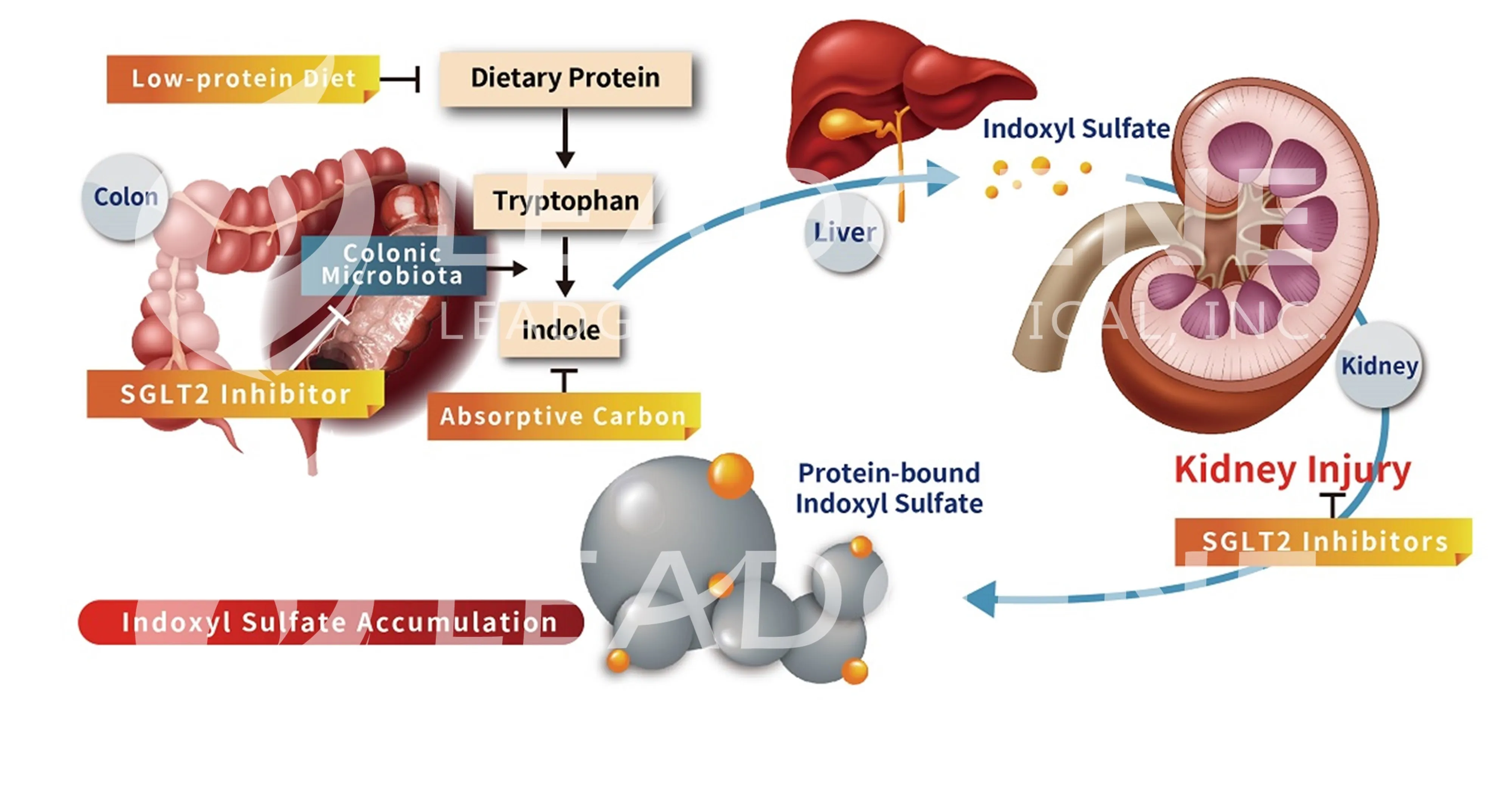
Figure 1. Formation of Indoxyl Sulfate.The breakdown of tryptophan results in the production of indole in the intestine, which is then converted to indoxyl sulfate by sulfotransferase enzymes in the liver. Accumulation of indoxyl sulfate occurs in CKD patients due to impaired kidney functions.
Currently, serum IS levels are primarily quantified using mass spectrometry (MS)-based methods, which are not feasible for routine clinical examinations. Achieved by a breakthrough in antibody discovery, Leadgene proudly released LEADGENE® Indoxyl Sulfate (IS) ELISA Kit (Cat. No. LGM-18002), a new milestone in the CKD diagnostic. LEADGENE® Indoxyl Sulfate (IS) ELISA Kit is the first CE-registered antibody-based assay tool for the detection of serum IS levels, with features of high sensitivity, ultra-specificity, shortened and simpler operation process, and quality results comparable to the traditional UPLC-MS/MS method (Figure 2). Importantly, ROC analysis with clinical data showed that, by calculating the area under the ROC curve (AUC), an optimal cutoff was set at 2.233 μg/mL, indicating that LEADGENE® Indoxyl Sulfate (IS) ELISA Kit can be used to detect serum IS levels at their low concentration for diagnostics of CKD in the early stages (Figure 3).
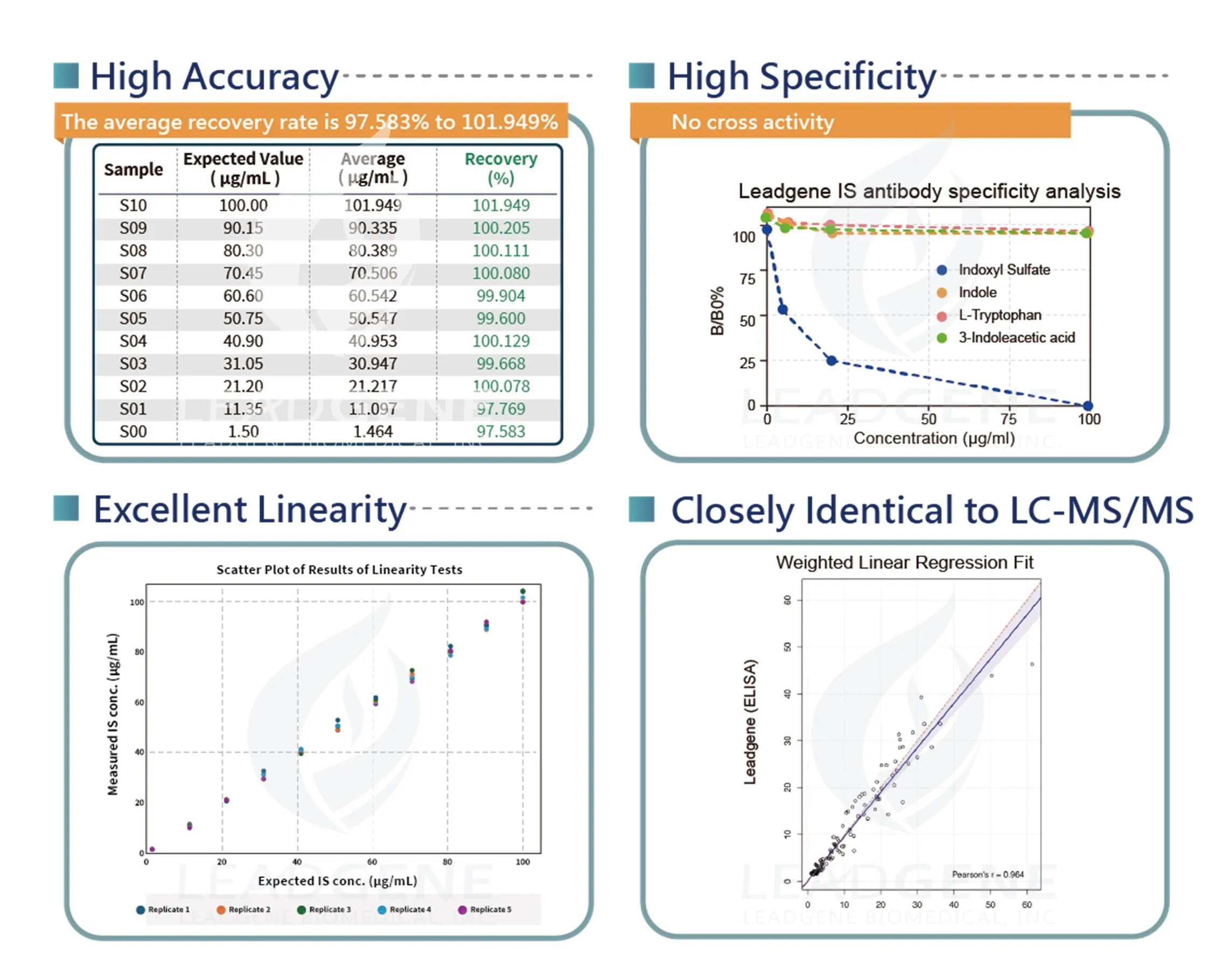
Figure 2. LEADGENE® Indoxyl Sulfate (IS) ELISA Kit delivery quality results. The kit showed high accuracy with great recovery rates and excellent linearity. Antibody specificity was demonstrated by cross-reactivity tests against analogs. Serum IS levels were quantified using LC-MS/MS and LEADGENE® Indoxyl Sulfate (IS) ELISA Kit. Pearson's analysis of the data indicates a significantly positive correlation (r = 0.964).
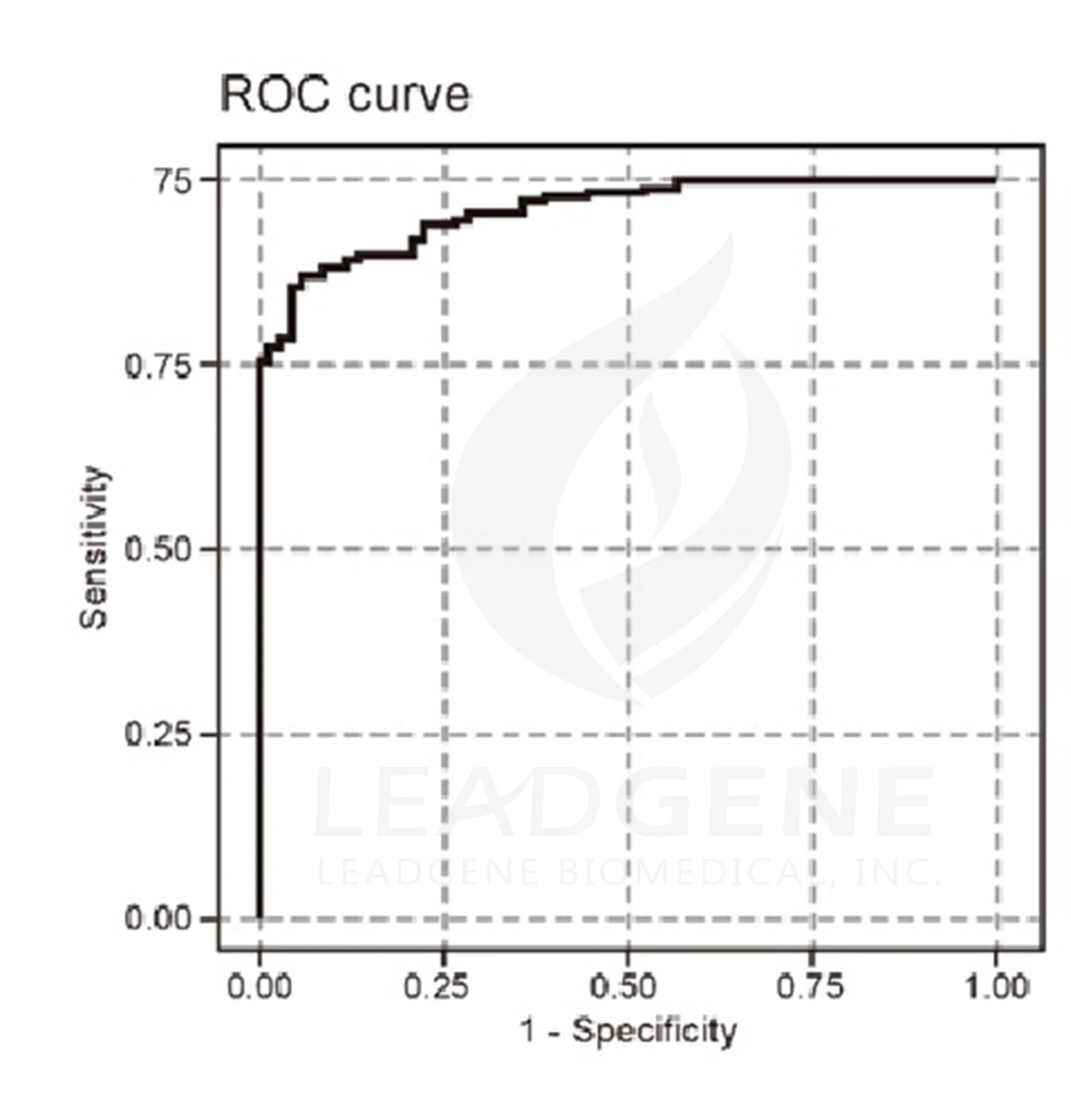
Figure 3. The ROC curve was plotted to calculate the trade-off between the true positive rate (sensitivity) and the false positive rate (1 - specificity). The clinical performance showed that the area under the ROC curve (AUC) was 0.96, and the optimal cutoff was determined to be 2.233 μg/mL at which the sensitivity was 0.872 (95% CI: 0.816 - 0.912), and the specificity was 0.940 (95% CI: 0.856 - 0.977).
Estimated glomerular filtration rate (eGFR) and serum creatinine levels are commonly used to assess the progression of kidney diseases, although they are applied in the late stages of CKD and affected by factors other than kidney function, such as age, gender, diet, muscle mass, and certain medications. Nevertheless, eGFR and serum creatinine are still commonly used CKD markers, and are associated with the serum IS levels. Notably, in the report by Shuangdi et al. (3), the correlation of eGFR or creatinine with IS detected by UPLC-MS/MS can be nicely replicated when using LEADGENE® Indoxyl Sulfate (IS) ELISA Kit (Figure 4), indicating the method using LEADGENE® Indoxyl Sulfate (IS) ELISA Kit a good clinical practice to assess the renal functions.
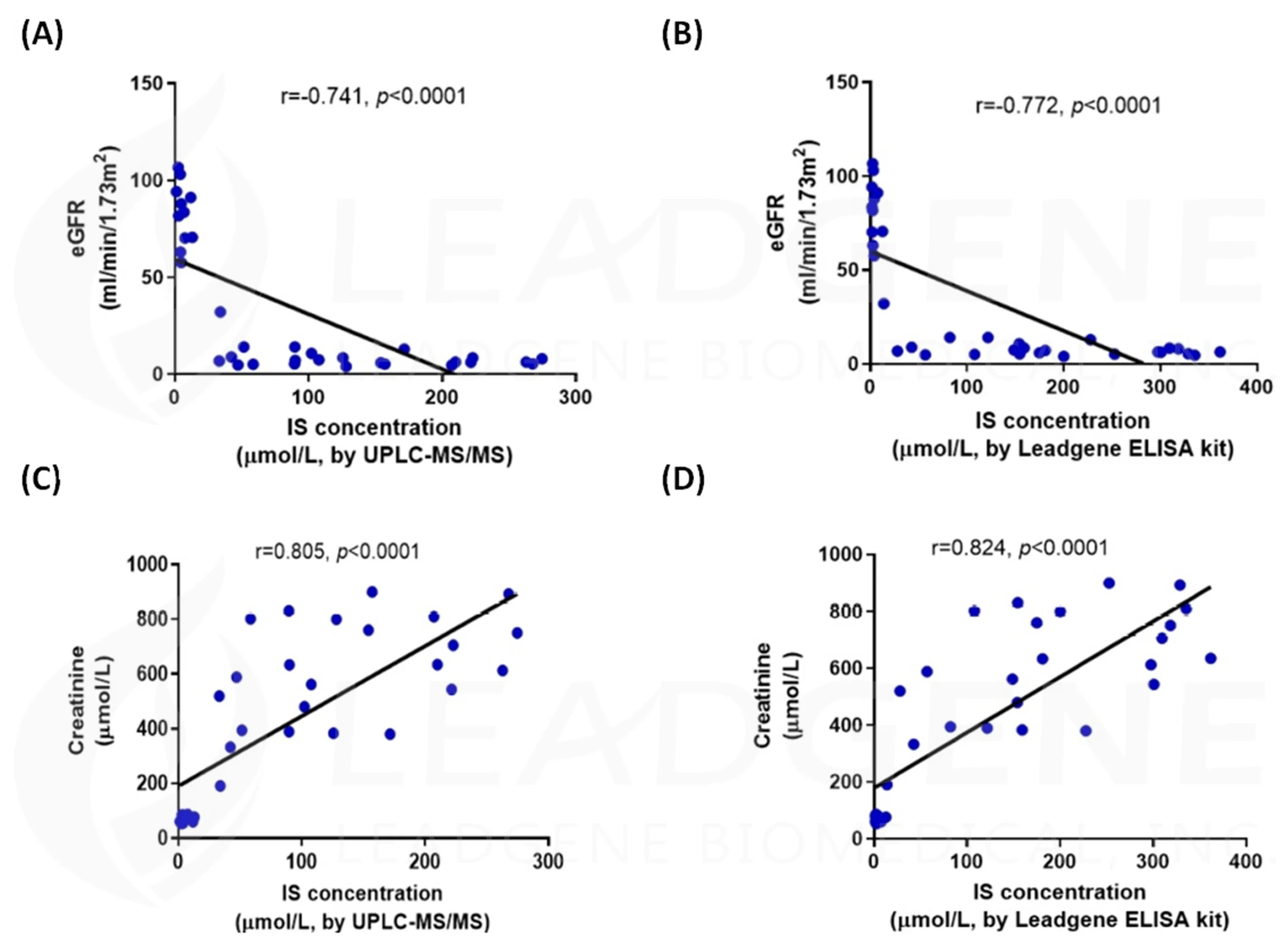
Figure 4. Correlation analysis of serum IS levels and renal function parameters in CKD patients. Correlations between the eGFR and UPLC-MS/MS-determined serum IS levels (A), or LEADGENE ELISA-determined serum IS levels (B). Correlations between the serum creatinine levels and UPLC-MS/MS-determined serum IS levels (C) or LEADGENE ELISA-determined serum IS levels (D).
Taken together, LEADGENE® Indoxyl Sulfate (IS) ELISA Kit provides a more accelerated and economical solution for the detection of serum IS levels than the traditional MS-based method (Table 1). LEADGENE® Indoxyl Sulfate (IS) ELISA Kit not only can be a personalized method for monitoring the dynamic changes in serum IS levels in CKD patients to evaluate disease progression and develop treatment strategies, but also can be further employed in physical examinations in healthy people to inspect kidney functions.

Table 1. Comparison between UPLC-MS/MS and LEADGENE® Indoxyl Sulfate (IS) ELISA Kit for detecting serum IS levels.
References:
- Clin J Am Soc Nephrol. 2009 Oct;4(10):1551-8.
- Antioxidants (Basel). 2021 Jun; 10(6): 936.
- Heliyon 2022 Dec;8(12): E12220.
